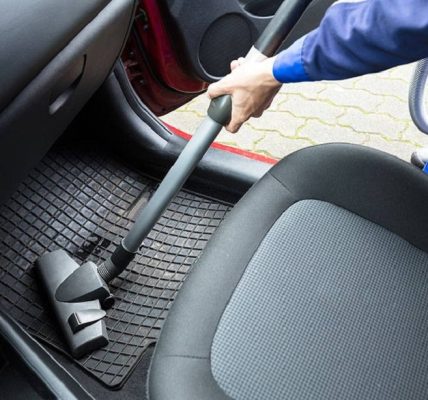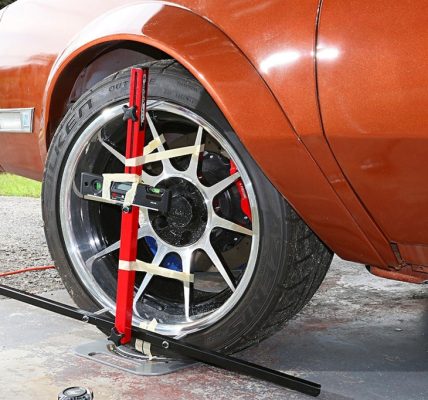Tyre rotation in cars is a simple yet vital maintenance task that ensures safety and saves money. Imagine driving smoothly, knowing your tyres wear evenly, reducing the risk of blowouts. I once neglected this routine, facing uneven tread wear that cost me a pricey replacement. By rotating your tyres regularly, you extend their lifespan and improve vehicle handling. According to a Michelin study, proper tyre rotation can boost tyre life by up to 20%. This blog post shares a personal journey and expert insights on why tyre rotation matters, how it works, and tips to do it right. Let’s dive into the world of tyre rotation and discover its benefits!
What Is Tyre Rotation and Why Does It Matter?
Tyre rotation involves moving your car’s tyres from one position to another, like swapping front and rear tyres. This ensures even wear, as front tyres often bear more weight and wear faster due to steering and braking. Uneven wear can lead to poor handling and costly replacements. Regularly rotating tyres keeps your vehicle balanced and safe.
For example, my sedan’s front tyres wore out faster, causing slight skids on wet roads. After rotating them, the handling improved noticeably. A 2023 study by Goodyear found that tyre rotation extends tread life by 15–20%, saving drivers hundreds over time. By maintaining even wear, you avoid premature tyre purchases and enhance road safety.
Transitioning to the next section, understanding the process makes tyre rotation less daunting. Let’s explore how it’s done.
How Tyre Rotation Works
Tyre rotation follows specific patterns based on your vehicle’s drivetrain. For front-wheel-drive cars, front tyres move to the rear, and rear tyres cross to the opposite front side. Rear-wheel-drive vehicles often use a different pattern, while all-wheel-drive cars may rotate tyres in a crisscross or X-pattern. Always check your car’s manual for the right method.
The process is straightforward. Mechanics lift the car, remove the tyres, and reposition them. It takes about 30 minutes at a shop. I learned this after watching a mechanic rotate my tyres, explaining how each position affects wear. According to the National Highway Traffic Safety Administration (NHTSA), consistent tyre rotation reduces uneven wear by 25%. This simple task keeps your tyres in top shape.
Next, let’s discuss why regular rotation is crucial for your wallet and safety.
Benefits of Regular Tyre Rotation
Regular tyre rotation offers multiple benefits, starting with cost savings. Tyres that wear evenly last longer, delaying expensive replacements. For instance, I extended my tyre life by a year after committing to regular rotations. A 2022 Bridgestone report states that drivers can save up to $150 annually with proper tyre maintenance, including rotation.
Additionally, rotation improves safety. Evenly worn tyres provide better traction, reducing skids or hydroplaning risks. It also enhances fuel efficiency, as uneven tyres create drag, forcing your engine to work harder. With gas prices rising, this matters. Finally, rotation ensures a smoother ride, as balanced tyres reduce vibrations. By prioritizing this task, you protect your wallet and passengers.
Now, let’s look at how often you should rotate your tyres.
How Often Should You Rotate Your Tyres?
Most experts recommend rotating tyres every 6,000 to 8,000 miles or every six months, whichever comes first. Check your car’s manual for specific guidance, as some vehicles require different intervals. For example, I rotate my tyres every oil change, roughly every 7,000 miles, to stay consistent. This habit has kept my tyres in great condition.
However, driving habits affect rotation frequency. Aggressive driving or heavy loads accelerate wear, requiring more frequent rotations. According to Michelin, drivers in urban areas with frequent stops may need rotations every 5,000 miles. Monitoring tread depth with a penny test—inserting a penny to check if Lincoln’s head is visible—helps determine timing. Staying proactive keeps your tyres performing well.
Let’s explore the different rotation patterns for various vehicles.
Tyre Rotation Patterns for Different Vehicles

Tyre rotation patterns vary by vehicle type to address unique wear patterns. For front-wheel-drive cars, the front tyres move straight to the rear, while rear tyres cross to the front. Rear-wheel-drive vehicles often use a forward-cross pattern. All-wheel-drive cars may follow an X-pattern, swapping all tyres diagonally. These patterns balance wear effectively.
I drive a front-wheel-drive hatchback and noticed better handling after following the recommended pattern. For directional tyres, which roll in one direction, rotation is simpler—front to rear on the same side. The NHTSA suggests checking your manual to confirm the correct pattern. Using the wrong one can reduce benefits. Understanding your vehicle’s needs ensures optimal tyre performance.
Next, we’ll cover practical tips for effective tyre rotation.
Tips for Effective Tyre Rotation
To maximize tyre rotation benefits, follow these tips:
- Check your manual: Confirm the correct rotation pattern for your vehicle.
- Inspect tyres: Look for uneven wear or damage before rotating.
- Balance and align: Combine rotation with wheel balancing and alignment for best results.
- DIY or professional: If rotating at home, use a jack and torque wrench; otherwise, visit a trusted mechanic.
- Track mileage: Note when you last rotated tyres to stay on schedule.
I started tracking my rotations in a notebook, ensuring I never miss a session. Combining rotation with alignment saved me from uneven wear issues. According to Goodyear, proper alignment can extend tyre life by 10%. These steps make rotation effective and hassle-free.
Let’s address common mistakes to avoid during tyre rotation.
Common Mistakes to Avoid
Many drivers make mistakes that reduce tyre rotation benefits. One error is ignoring the owner’s manual, leading to incorrect patterns. I once swapped tyres randomly, causing uneven wear. Another mistake is skipping rotations, thinking it’s unnecessary. This shortens tyre life and risks safety.
Additionally, neglecting wheel alignment or balancing during rotation can cause vibrations. A 2023 Tire Rack study found that 30% of drivers skip alignment, leading to premature tyre wear. Finally, using mismatched tyres—different sizes or brands—disrupts rotation benefits. Always ensure tyres match your vehicle’s specifications. Avoiding these errors keeps your tyres in top condition.
Transitioning to the conclusion, let’s wrap up the importance of tyre rotation.
Conclusion
Tyre rotation in cars is a game-changer for safety and savings. By ensuring even wear, you extend tyre life, improve handling, and boost fuel efficiency. My experience with uneven tread taught me the value of regular rotation, saving me from costly replacements. With benefits like enhanced traction and a smoother ride, this simple task is non-negotiable. Studies from Michelin and Goodyear confirm that tyre rotation can save hundreds annually. Make it a habit to rotate every 6,000–8,000 miles, and always follow your vehicle’s manual. Share your tyre rotation tips in the comments or spread this guide to help others!
FAQs
Why is tyre rotation important for cars?
Tyre rotation ensures even wear, extends tyre life, improves safety, and enhances fuel efficiency.
How often should I rotate my car’s tyres?
Rotate tyres every 6,000–8,000 miles or every six months, per your car’s manual.
Can I rotate my tyres myself?
Yes, with a jack and torque wrench, but professionals ensure proper alignment and balancing.
What happens if I don’t rotate my tyres?
Skipping rotation causes uneven wear, reduces tyre life, and increases safety risks.
Does tyre rotation improve fuel efficiency?
Yes, even tyre wear reduces drag, improving fuel efficiency, as per Bridgestone studies.
Read More:
Reviving Rusty Power: A Comprehensive Guide to Fixing Corroded Battery Terminals
Does Your Air Filter Really Choke Your Engine? Unveiling the Truth About Performance and Filtration





